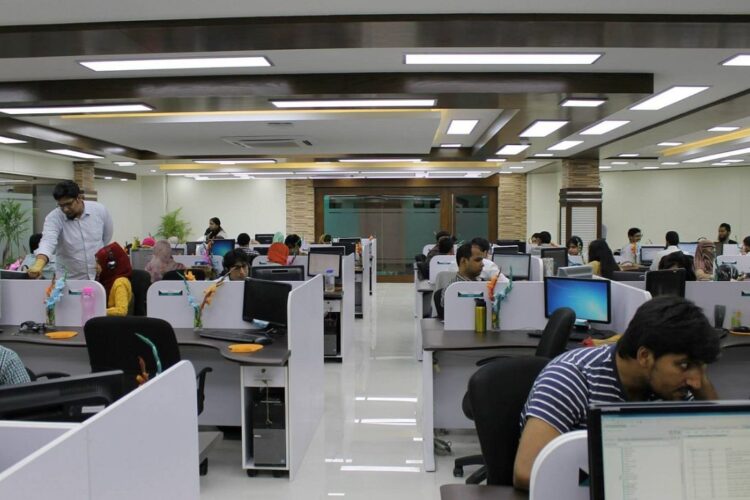
Introduction
In today’s fast-paced digital world, businesses often need tailored software solutions to address their unique challenges. This is where custom application development shines. This comprehensive guide will delve into the intricacies of custom application development, exploring its benefits, best practices, and common FAQs.
The Importance of Custom Application Development
Custom application development refers to the process of creating software specifically designed to meet the unique requirements of a particular business or organization. Unlike off-the-shelf solutions, custom applications are built from the ground up, offering unparalleled flexibility and scalability.
Understanding Business Needs
Before embarking on the development journey, gaining a deep understanding of the client’s business needs, objectives, and pain points is crucial. Developers can tailor the solution to align perfectly with the client’s goals by conducting thorough requirements analysis.
Flexibility and Scalability
One of the primary advantages of custom application development is its inherent flexibility. Unlike pre-packaged software, custom solutions can be easily adapted and modified as the business grows and evolves. This scalability ensures that the software remains relevant and effective in the long run.
Enhanced Efficiency and Productivity
By streamlining processes and automating repetitive tasks, custom applications can significantly enhance efficiency and productivity within an organization. With features tailored to specific workflows, employees can accomplish tasks more quickly and accurately, leading to tangible bottom-line results.
Best Practices in Custom Application Development
Collaborative Approach
Successful custom application development relies on close collaboration between developers and stakeholders. By involving end-users early in the process, developers can gather valuable feedback and ensure that the final product meets their needs and expectations.
Agile Methodology
Adopting an agile development methodology allows for iterative and incremental progress, enabling developers to respond quickly to changing requirements and priorities. This approach promotes transparency, flexibility, and continuous improvement throughout the development lifecycle.
Embracing Emerging Technologies
Custom application developers must embrace emerging technologies such as artificial intelligence, machine learning, and blockchain to stay ahead of the curve. By leveraging these cutting-edge tools and techniques, developers can create innovative solutions that drive business value and competitive advantage.
Addressing Common Concerns
Security Considerations
Security is a top priority in custom application development. Developers must implement robust security measures to protect sensitive data and mitigate potential vulnerabilities. This includes regular security audits, encryption, and user authentication protocols.
Cost and Timeline
While custom application development may require a higher initial investment than off-the-shelf solutions, the long-term benefits often outweigh the costs. Custom applications can deliver significant ROI and competitive advantage over time by delivering precisely what the client needs.
Frequently Asked Questions
What are the key advantages of custom application development?
Custom application development offers unparalleled flexibility, scalability, and efficiency compared to off-the-shelf solutions. Organizations can achieve greater productivity and competitive advantage by tailoring the software to specific business needs.
How long does it take to develop a custom application?
The timeline for custom application development varies depending on the scope and complexity of the project. While some projects may be completed in weeks, others may take several months or even years to develop and deploy fully.
What technologies are commonly used in custom application development?
Custom application development relies on a wide range of technologies, including programming languages like Java, Python, and JavaScript, as well as frameworks such as Angular, React, and Node.js. Additionally, developers may leverage cloud computing platforms like AWS, Azure, and Google Cloud for hosting and infrastructure.
Can custom applications be integrated with existing systems?
Custom applications can be seamlessly integrated with existing systems and databases to ensure smooth data flow and interoperability. This allows organizations to leverage their existing investments while adding new functionality and features as needed.
How do I choose the right custom application development partner?
When selecting a custom application development partner, it’s essential to consider factors such as experience, expertise, and track record of success. Look for a partner who understands your business needs and has a proven track record of delivering high-quality, innovative solutions.
What ongoing support and maintenance are required for custom applications?
Once the custom application is deployed, ongoing support and maintenance are essential to ensure optimal performance and security. This may include regular updates, bug fixes, and enhancements to address evolving business needs and technological advancements.
Exploring Emerging Trends
Embracing Cloud-Native Solutions
With the rise of cloud computing, custom application development has evolved to embrace cloud-native architectures and services. By leveraging platforms such as AWS Lambda, Microsoft Azure Functions, and Google Cloud Run, developers can build scalable, resilient, cost-effective applications that integrate seamlessly with cloud infrastructure.
Harnessing the Power of AI and Machine Learning
Artificial intelligence (AI) and machine learning (ML) technologies are transforming the landscape of custom application development. From predictive analytics to natural language processing, AI-powered solutions enable organizations to extract actionable insights from data and automate complex tasks with unprecedented accuracy and efficiency.
Unlocking the Potential of Blockchain
Blockchain technology holds immense promise for custom application development, particularly in finance, supply chain, and healthcare industries. By providing a decentralized and tamper-proof ledger, blockchain enables secure and transparent transactions, reducing fraud, improving traceability, and enhancing stakeholder trust.
Addressing Common Challenges
Ensuring Compatibility and Interoperability
One of the key challenges in custom application development is ensuring compatibility and interoperability with existing systems and third-party services. Developers must carefully design and implement APIs, data formats, and integration points to facilitate seamless communication and exchange between disparate systems.
Managing Complexity and Technical Debt
As custom applications grow in scope and complexity, they may accumulate technical debt—a term that describes the backlog of maintenance and refactoring tasks incurred during development. To mitigate this risk, developers must adopt clean coding practices, refactoring techniques, and automated testing strategies to maintain code quality and stability over time.
FAQs (Frequently Asked Questions)
How can custom application development help my business stay competitive in the digital age?
Custom application development enables businesses to differentiate themselves from competitors by delivering unique value propositions, personalized experiences, and innovative solutions that address specific customer needs and market demands.
What factors should I consider when estimating the cost of custom application development?
Custom application development costs depend on various factors, including project scope, complexity, technology stack, development team size, and geographic location. Conducting a thorough requirements analysis and soliciting quotes from multiple vendors to estimate costs and budgets is essential.
What potential risks are associated with custom application development, and how can they be mitigated?
Common risks in custom application development include project delays, budget overruns, technical challenges, and changing requirements. To mitigate these risks, it’s crucial to establish clear project goals, communicate effectively with stakeholders, conduct regular risk assessments, and maintain a flexible and adaptive mindset throughout the development process.
How can I ensure the security of my custom application against cyber threats and data breaches?
To enhance the security of custom applications, developers must follow best practices such as implementing robust authentication and authorization mechanisms, encrypting sensitive data at rest and in transit, conducting regular security audits and penetration testing, and staying vigilant against emerging threats and vulnerabilities.
What role does user experience (UX) design play in custom application development?
User experience (UX) design is a critical aspect of custom application development, as it directly impacts user satisfaction, engagement, and retention. By adopting UX design principles such as usability, accessibility, and aesthetics, developers can create intuitive, user-friendly interfaces that enhance the overall user experience and drive adoption and loyalty.
How can I measure the success of my custom application after deployment?
Measuring the success of a custom application requires defining clear, measurable objectives and key performance indicators (KPIs) aligned with business goals. Common metrics include user adoption rates, customer satisfaction scores, conversion rates, revenue growth, and return on investment (ROI). By regularly monitoring and analyzing these metrics, organizations can assess the impact and effectiveness of their custom application and identify opportunities for improvement and optimization.
Conclusion
In conclusion, custom application development offers a strategic approach to addressing unique business challenges and opportunities in the digital age. By leveraging emerging technologies, adopting best practices, and addressing common concerns, organizations can unlock new possibilities for innovation, efficiency, and growth. Whether streamlining workflows, enhancing customer experiences, or driving competitive advantage, custom applications empower businesses to thrive in an increasingly dynamic and competitive landscape.



